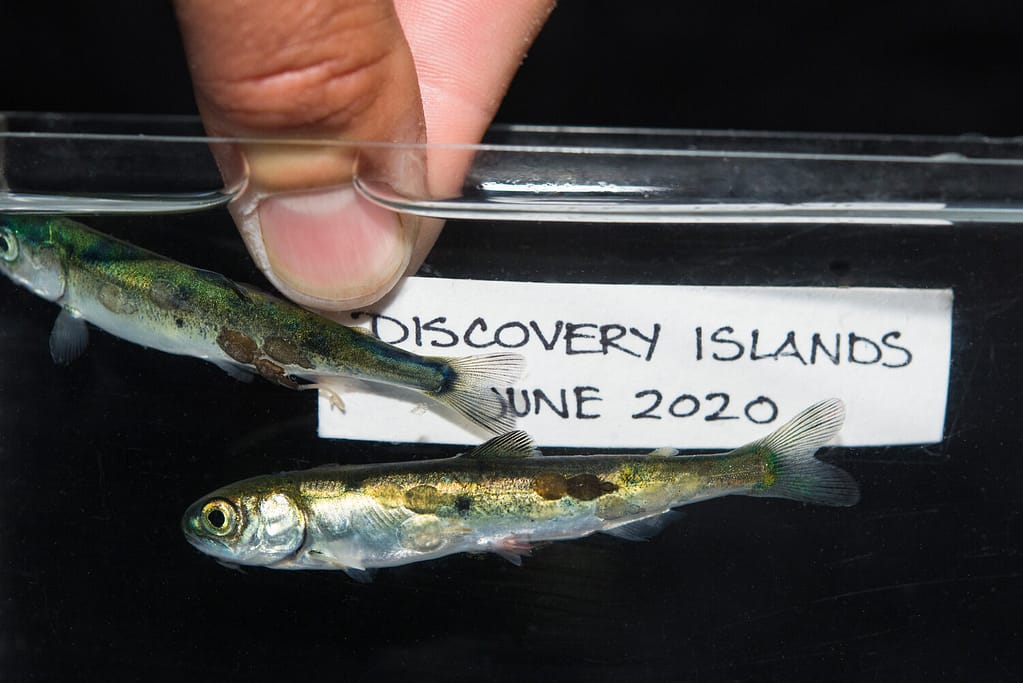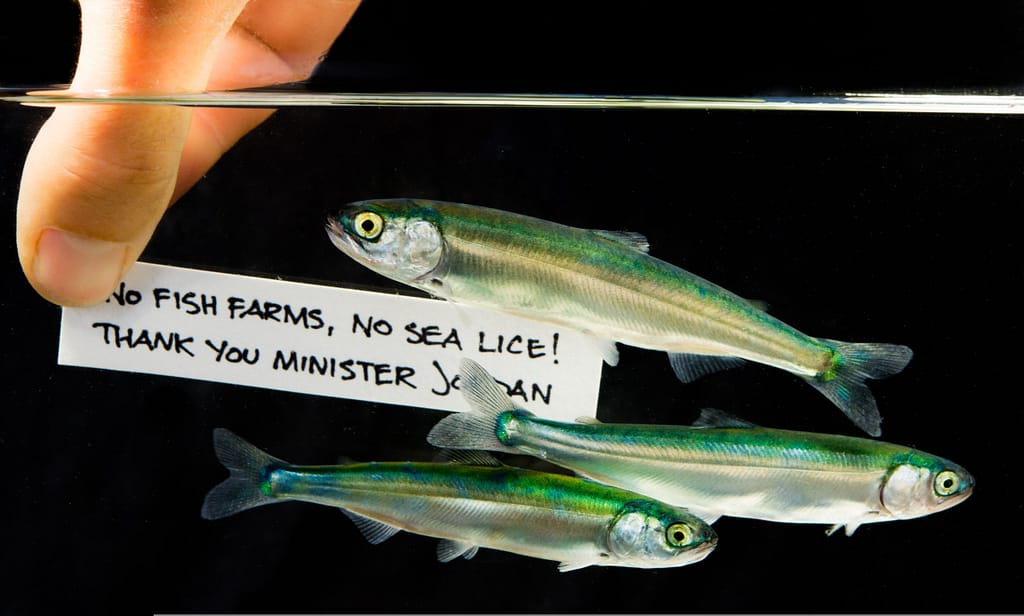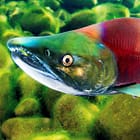 What does the science say about the threat of Atlantic salmon farms?
What does the science say about the threat of Atlantic salmon farms?
Several organizations such as Raincoast Research, the Georgia Strait Alliance, the Pacific Salmon Foundation and Living Oceans provide science-based information on their websites about how floating, open-net Atlantic salmon farms threaten the health of wild Pacific salmon. The principal concerns, sea lice and viruses, are comprehensively documented in the film Salmon Confidential.
Sea Lice
The dense concentration of salmon in the farms creates an environment where naturally occurring sea lice reproduce at an extraordinarily high rate and disperse widely into the surrounding area by water flowing through the nets. There they latch onto juvenile salmon in numbers that seriously weaken and probably kill them. When the farms are removed, wild salmon have no lice! Despite elaborate measures, Atlantic salmon farm companies have been unsuccessful at controlling the lice from their operations, and lice seem to be developing resistance to chemical treatment, notably in Clayoquot Sound on the west coast of Vancouver Island. There are similar concerns in Atlantic Canada.
Viruses
Piscine orthoreovirus (PRV) causes disease in farmed Atlantic salmon and can be transferred to wild Pacific salmon. It is estimated to infect up to three-quarters of BC’s open-net farmed Atlantic salmon and can cause heart and skeletal inflammation disease (HSMI) and result in high mortality rates. There is significant concern that wild Pacific salmon migrating past disease-infested farms and blood water discharged from processing plants are dying off due to the high risk of PRV infection. Another concern is that sockeye salmon infected with PRV have reduced success in reaching their spawning grounds. Recent research has demonstrated that PRV was brought to BC from Norway as farm companies stocked their open-net pens with young Atlantic salmon, and that it spreads to wild Pacific Salmon. PRV has also spread from Norway to Chile, directly and via B.C. or Washington state.
Meanwhile, Canada’s regulator, the Department of Fisheries and Oceans (DFO), refuses to classify PRV as a disease agent so viruses can legally be put into the marine environment where they infect wild fish. DFO is not even monitoring the health of wild fish.
Mouth Rot
Federal government scientists are alarmed about a mouth rot disease that is infesting Atlantic salmon farms in B.C., saying there are “realistic and serious” concerns about transmission of the bacteria that sickens migrating Fraser River sockeye salmon. Mouth rot causes lesions on the upper and lower jaws, making it difficult for fish to feed. Mortality rates can reach 30 per cent, according to DFO. Once established, the disease can re-occur in populations over several months and is very difficult to treat.

Furunculosis
Furunculosis is a serious bacterial disease found predominantly in salmonids and causing boils and blisters on their skin. It occurs in freshwater and marine salmonid aquaculture in all countries except Australia and New Zealand. It causes high mortality in fish within days of symptoms appearing.


Furunculosis first arrived in B.C.’s Broughton Archipelago in 1991 with Atlantic salmon eggs brought from Scotland. Shortly thereafter, a furunculosis epidemic broke out in local fish farms, spread to Coho salmon and entered a local salmon hatchery. A second furunculosis outbreak occurred in 1994, this time an antibiotic-resistant strain. Immediately all age-classes of wild Chinook salmon in Kingcome Inlet crashed; fishing lodges closed. Throughout, DFO allowed farmers to leave the infected fish in the water, treat them with antibiotics, and made no visible effort to investigate the effects on wild salmon. Today, furunculosis remains an issue in farmed Atlantic salmon; while its impact on wild Pacific salmon has not been studied, it is known to be highly contagious and fatal to them.
Pollution
First Nations have stressed concerns about the effects of farm waste on other resources such as contaminating clam beaches.
When you talk about the feces and the waste that comes out of [fish farms], it has to go somewhere. And when you look at the mainland inlets [Broughton Archipelago] where you get a real strong tidal flow, you know they assume that the waste is just going to drop to the bottom and settle there. But the tidal flow in there is so strong you are starting to see the cumulative effects and the far-field damages that are going on out there now. I mean, the beaches from when I was a little boy, I looked at all those beaches and how beautiful, like when you see sand and it is so white and fresh smelling. Today, you walk on those beaches and its smells like the sewer. Those are the changes that we are seeing. – Brian Wadhams, traditional harvester and clam-digger
In Atlantic Canada there are similar concerns about the effects of fish farm waste, especially chemicals, on lobsters. Recent research found that, when farms were active, local lobster numbers were reduced by about half compared to when they were inactive.


